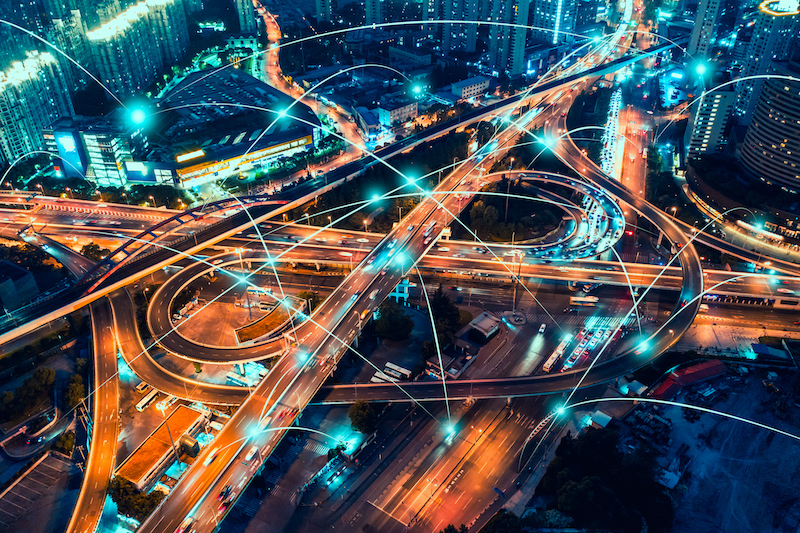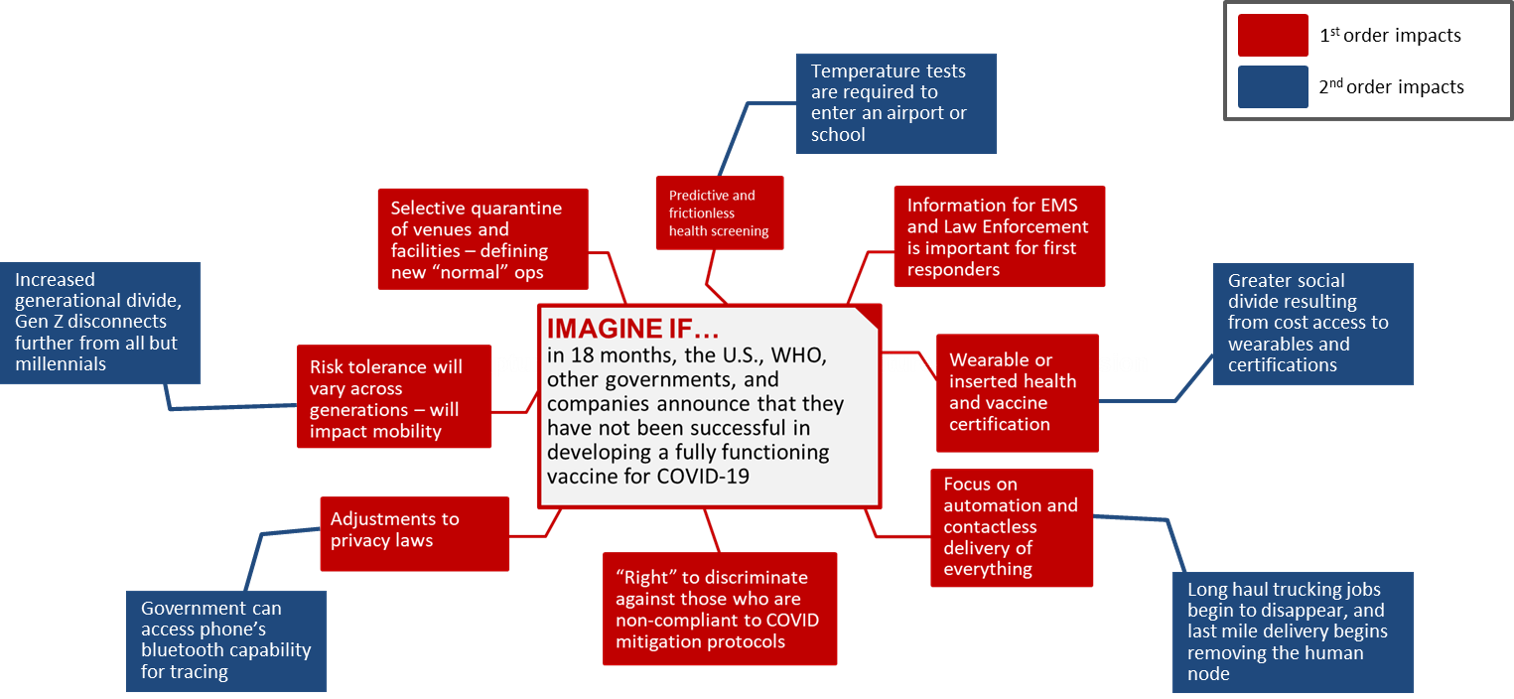Human & Organizational Mobility in a Post-COVID-19 World

The Forces Changing the Mobility Landscape
Mobility – the movement of people and goods – was transforming well before COVID-19. As the coronavirus pandemic has shown, however, human behavior dictates technology development and adoption. For example, with physical distancing protocols implemented to mitigate the spread of the disease, people have moved to an almost completely virtual environment, encompassing everything from work-from-home and “contactless delivery” of household supplies to live-streamed religious sermons and school sessions to virtual entertainment. Consequently, people’s behaviors, habits, and desires have changed, forcing organizations to develop new service models that cater to a new reality, likely shaping the future of mobility over the next decade or more. What will change? How severe will the economic and societal impacts be on transportation (land, air, sea, and space)? What new risks will arise? How will the human journey map be different?
As we described in our blog on the phases of the pandemic, much of the changes we see – derived from our analysis and discussions across our Global Knowledge Network – are materializing now in the Great Wait, but will intensify and evolve into the Novel Normal.
To best capture changes in perception and behaviors – human and institutional – we use the following framework to describe them:
- People, Culture, and Society – includes behaviors, psychological preferences, and societal interactions that influence human mobility
- Technology – includes maturing advanced technology that is used to accelerate human mobility in a COVID-19 stricken world
- Industry and Government – includes the role of industry and government in enabling (or constraining) mobility
People, Culture, and Society
Social Inequities
The pandemic highlights issues of social equity and access. For example, as public modes of transportation are stronger vectors for disease spread, those who depend on them are vulnerable, especially with no alternative. Additionally, access to premium health programs and products may dictate mobility in the future, because some individuals will be able to afford “immuno-certifications,” enabling them to freely move.
Cultural Variation
Cultural variation and bias have dictated response and recovery efforts. For example, in Asia, masks are commonplace, whereas Americans may be less likely to abide. There are regional, local, and sub-cultural biases (even prejudices) that have converged causing variation at all levels: national, organizational, and individual. How do you navigate this and what is your truth to follow (e.g., compass)? Beyond disrupting established societal norms, conditions are being created for a period of great social friction that will endure until new norms are established.
Being Safe vs. Feeling Safe
Being safe does not equate to feeling safe. According to a survey of over 1,000 adults, a mere 16% would fly on an airplane on the day we all receive the “all clear” on COVID. If people live in a state of paranoia, and the idea of staying at a hotel, flying on a plane, taking a cruise, or riding any public transport is uncomfortable, the realities of sanitization and safety are trivial. With technology capabilities advancing and users becoming smarter, organizations can’t win by simply stating “trust us.” How can organizations – commercial and government – invest in technology, policies, and relationships to advance safety and security while ensuring a seamless experience?
Technology
Adapting to a world of physical distancing will be a natural catalyst for technology innovation as our rate of adoption accelerates, spurring further innovation. We are likely to see an acceleration of many technologies, particularly those that play into health and safety. Contactless, zero-touch technology in particular, but this may go beyond the cell phone and further into the realm of biometrics. Example capabilities include:
- A new type of digital and biometric ID, such as a replacement for a physical license and passport
- Supply chain verification, such as blockchain application or food supply transparency
- Frictionless checkpoints for health and security screening, such as airports and sport venues
- Tracking of goods and contact tracing of people who handle those goods (including through public transportation)
- Autonomous vehicles and delivery systems, such as long-haul trucking and last-mile delivery
Industry and Government
Human Capital and Value
How organizations behave and react will have long-lasting effects on their workforce and customer base. Talent will move around geographically and how employees are treated will affect mobility over time, not to mention further changing demographics of the talent base. Growing physical disconnect from certain activities creates possibilities for significant long-lasting changes, altering the mobility landscape. A chance for organizations to build goodwill with people and highlight their brand in a positive manner will emerge.
Transforming Roles and Responsibilities
The pandemic is highlighting the role of government in transportation; therefore, as new types, business models, and services emerge in the mobility space, government policies will be a big factor in influencing products (e.g., electric vehicle tax credits), encouraging markets (e.g., autonomous vehicle policies), and shifting behaviors (e.g., safety and privacy practices such as airport health screening).
Stimulus Investments
As governments around the world inject money into their economies through massive stimulus packages (one tracker has Japan leading at over 21% of GDP with the U.S. second at 13%), how they decide to allocate those funds can have a significant impact on national trajectories. A broad spread may create short-term relief; however, focused investment could position countries for long-term returns. Organizations such as the World Bank and the World Economic Forum are calling on policymakers to invest in sustainable infrastructure, which can accelerate global decarbonization efforts and infrastructure resilience. The focus and intent of stimulus spending will be an important signal to watch to get a glimpse into the potential long-term impact on mobility in a country.
Preparing for and Influencing the Future
There are many lessons that people, organizations, and nations have derived from this pandemic. One of which is to take action and be proactive. In that vein, below are a few actions you and your organization can explore to anticipate changes in mobility in a post-pandemic world:
- Be Proactive – Institute imaginative exploratory methods on a continual basis to scan for changes in the strategic and operational environment to uncover technology capability innovations, new products and services, security threats and vulnerabilities, and capital investment opportunities. Given the level of uncertainty the future holds – both during the Great Wait and the Novel Normal – monitoring indicators for future direction and adapting quickly will need to be a core organizational capability.
- Start with a Vision of the Future – Define a new strategy that considers the complexities of mobility, technology, hygiene (to prevent disease and other health risks), and resilience along with behavioral changes of employees, consumers, suppliers, and partners that define a new environment in which you will operate.
- Monitor, Monitor, Monitor – The high degree of uncertainty that will last for the next several years requires formal, wide-ranging monitoring to allow organizations to be proactive and create foresight. Incorporate non-traditional indicators and levers (e.g., behavioral, scientific, state, and local government policies) into your organization’s investment strategy across people, products, policies, and partners to build a rapid response to opportunities and threats into decision making.
An Exercise to Think about the Future
Food for thought: We typically engage in interactive, exploratory exercises to highlight first, second, and third-order impacts. What are your thoughts on the below scenario? Imagine if…in 18 months, no vaccine has been widely developed or distributed across the globe…what do you think the impacts would be? Share your ideas with one of our Toffler Associates!
 We’ve included example responses from some of our Global Knowledge Network leaders below:
We’ve included example responses from some of our Global Knowledge Network leaders below:
If you have any questions about envisioning the future, incorporating foresight into strategic planning, or setting up the mechanisms to monitor for signals about the future, please contact us.
Other COVID-19 resources:
- Categories
- Workforce of the Future


 About the Authors
About the Authors